Key takeaways:
- Effective onboarding fosters emotional connections, enhancing user retention and satisfaction by making users feel valued and guided.
- Key elements of successful onboarding include clarity, personalized guidance, and feedback mechanisms that empower users and keep them engaged.
- Utilizing the right tools, such as interactive guides and analytics, helps streamline onboarding processes and improve user experiences.
- Continuous improvement through user feedback and experimentation is crucial for adapting onboarding to evolving user needs and enhancing engagement.
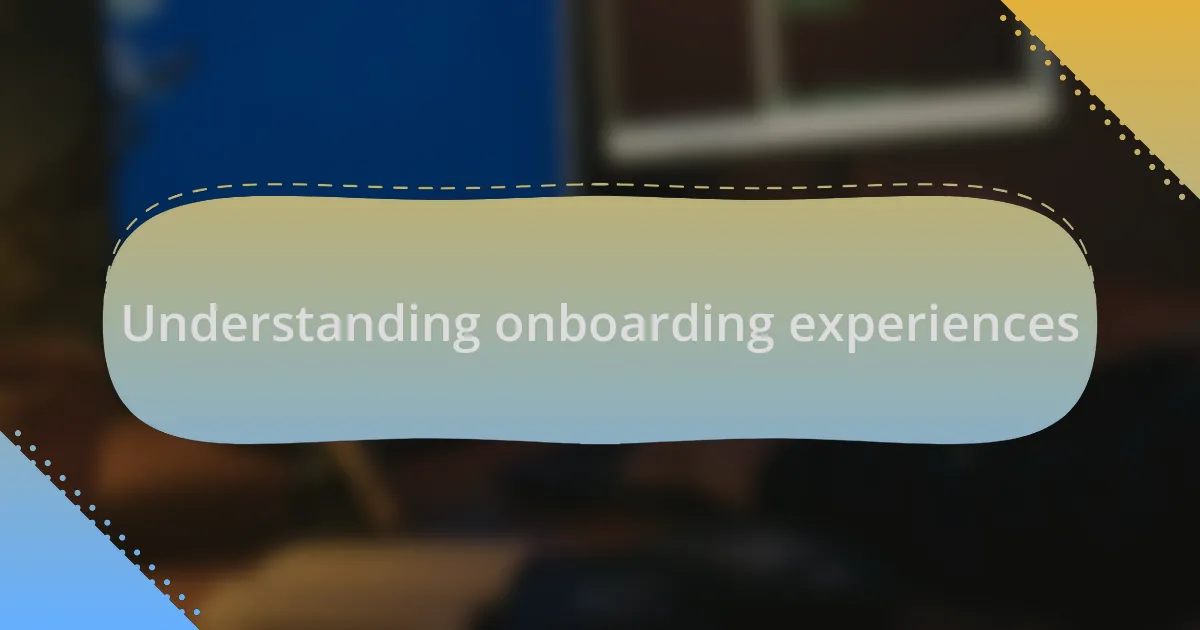
Understanding onboarding experiences
When I think about onboarding experiences, I often reflect on how they shape our perceptions from the very first interaction. Have you ever joined a platform only to feel lost in a sea of menus and options? That initial confusion can leave a lasting impression, often leading to frustration and disengagement.
Effective onboarding is like a welcoming handshake; it sets the tone for everything that follows. I remember starting my journey with a new programming language and being greeted by an intuitive tutorial that walked me through the basics. It wasn’t just about information; it was about feeling supported and capable, which ultimately fueled my eagerness to learn more.
Understanding onboarding experiences goes beyond just providing instructions; it involves creating an emotional connection. Picture yourself stepping into a new role or using unfamiliar software. Isn’t it comforting to have guidance that feels personal and tailored? An effective onboarding experience makes users feel valued, helping to build their confidence and laying the groundwork for long-term engagement.
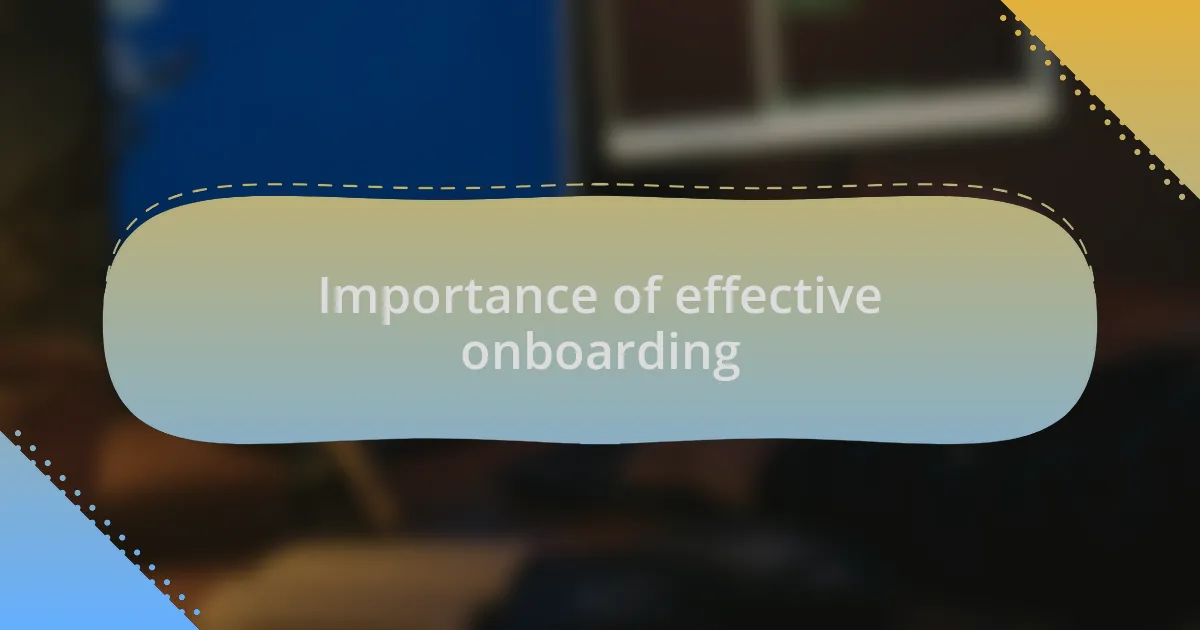
Importance of effective onboarding
Effective onboarding can significantly influence user retention and satisfaction. I recall when I first dived into an online learning platform; the initial onboarding made me feel like I had a personal guide. This sense of direction transformed my experience, turning what could have been a daunting task into an enjoyable journey. Isn’t it fascinating how that first impression can set a user on a path toward loyalty?
Moreover, onboarding isn’t just a checklist of tasks; it’s about fostering a sense of belonging. I vividly remember joining a coding community and being welcomed with tailored resources that resonated with my skill level. This thoughtful approach not only boosted my confidence but also encouraged me to engage more actively. Have you noticed how a warm welcome can make all the difference in whether someone sticks around or slips away?
Ultimately, the importance of effective onboarding lies in its ability to create lasting connections. When users feel supported and informed right from the start, they are more likely to delve deeper into the offerings of a platform. I believe that by investing time and effort into crafting these initial experiences, we can nurture long-term relationships that benefit both the user and the platform.
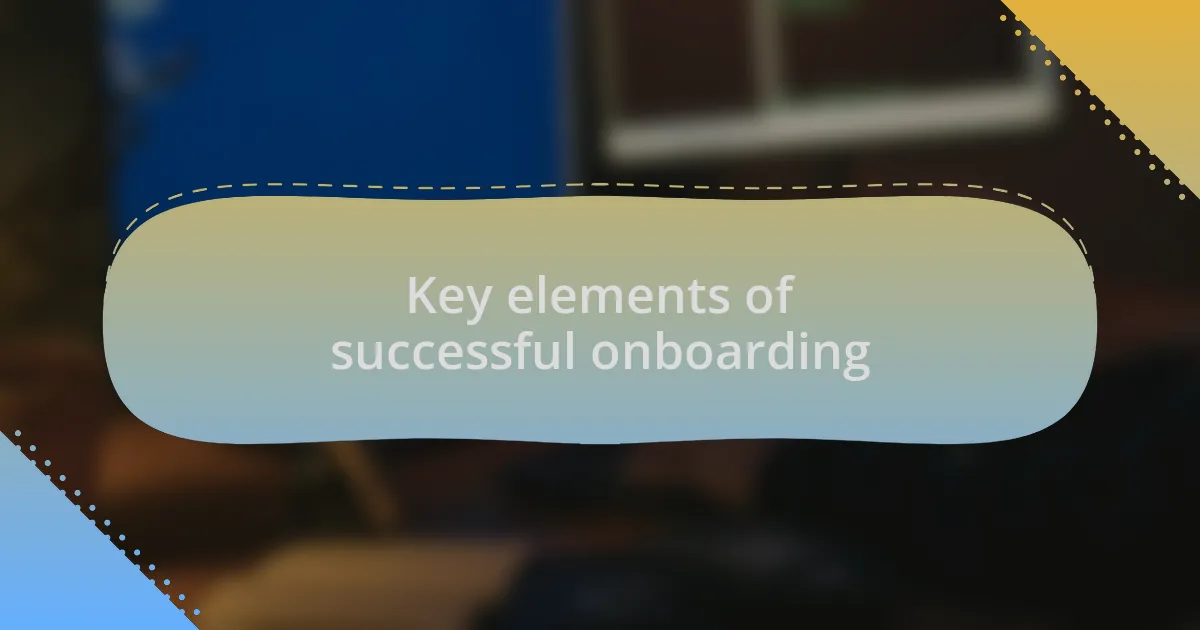
Key elements of successful onboarding
When I think about successful onboarding, two key elements come to mind: clarity and responsiveness. For instance, I vividly remember trying out a coding app that had a straightforward introduction, breaking down complex concepts into bite-sized, digestible tutorials. It felt empowering—like I was walking through a well-lit path instead of stumbling around in the dark. How often do we get overwhelmed by information that seems to come from every direction? Simplicity can be a game-changer.
Another crucial element is personalized guidance. I once enrolled in a programming course where the onboarding process adapted to my prior knowledge. The platform offered recommended materials based on my previous skills, making me feel seen and understood. That tailored touch not only built my confidence but also made me eager to explore further. Isn’t it amazing how a little personalization can transform a mundane experience into something truly engaging?
Finally, feedback mechanisms play a vital role in onboarding success. In one particular experience, I found a learning platform that encouraged me to share my thoughts after the initial setup. This small but impactful step made me feel that my opinions mattered. Have you ever felt more invested in something simply because your voice was heard? It’s this kind of interaction that reinforces a positive onboarding experience and fosters a sense of community right from the start.
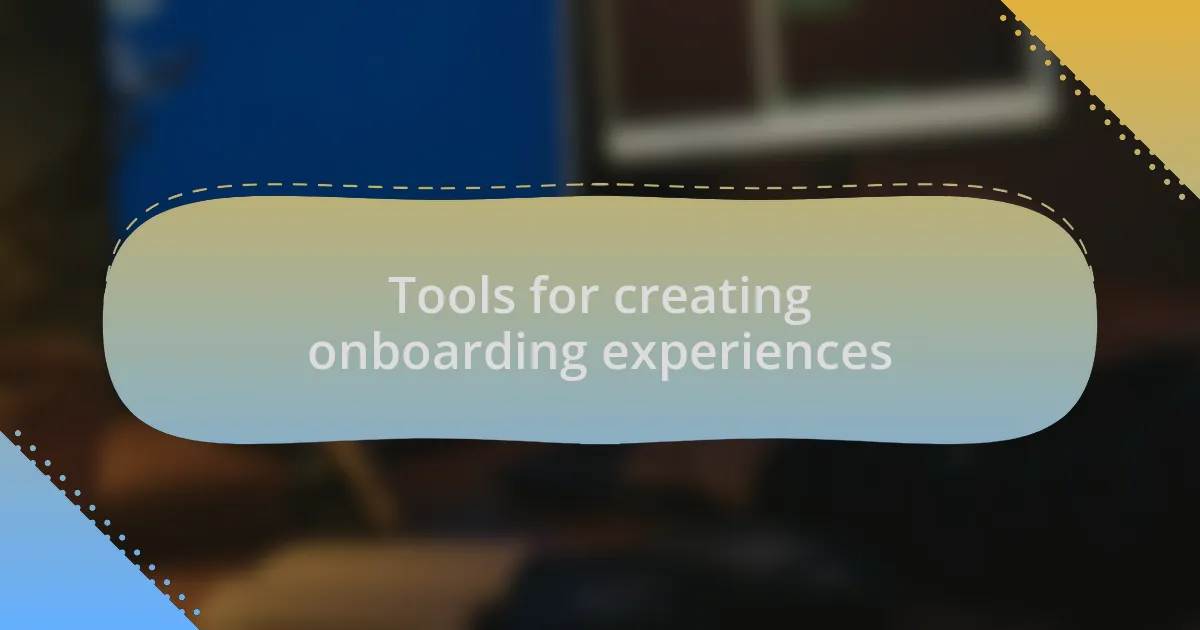
Tools for creating onboarding experiences
When it comes to creating effective onboarding experiences, the right tools can make all the difference. During my time exploring various platforms, I came across user-friendly software like Userlane and WalkMe that specialize in interactive guides. These tools allowed me to create step-by-step walkthroughs that not only guided me through a complex coding environment but also kept me engaged. Have you ever felt lost while trying to navigate new software? These tools can prevent that feeling by providing real-time assistance and support.
Another fantastic resource I’ve found is InVision, which is excellent for prototyping onboarding flows. I remember prototyping an onboarding experience that streamlined the user journey from sign-up to first project launch. The ability to visualize and test the onboarding process before implementation made me feel much more confident in what I was presenting. It’s amazing to see your ideas come to life in a way that resonates with users—how satisfying is that?
Finally, analytics tools like Google Analytics and Hotjar have been invaluable in fine-tuning onboarding experiences. With their insights, I could see where users dropped off or how they interacted with the onboarding material. Data-driven decisions have always resonated with me; knowing what works and what doesn’t allows for continuous improvement. Have you ever wondered why some users don’t stick around? Leveraging these tools can provide clarity and help tailor the experience to better meet user needs.
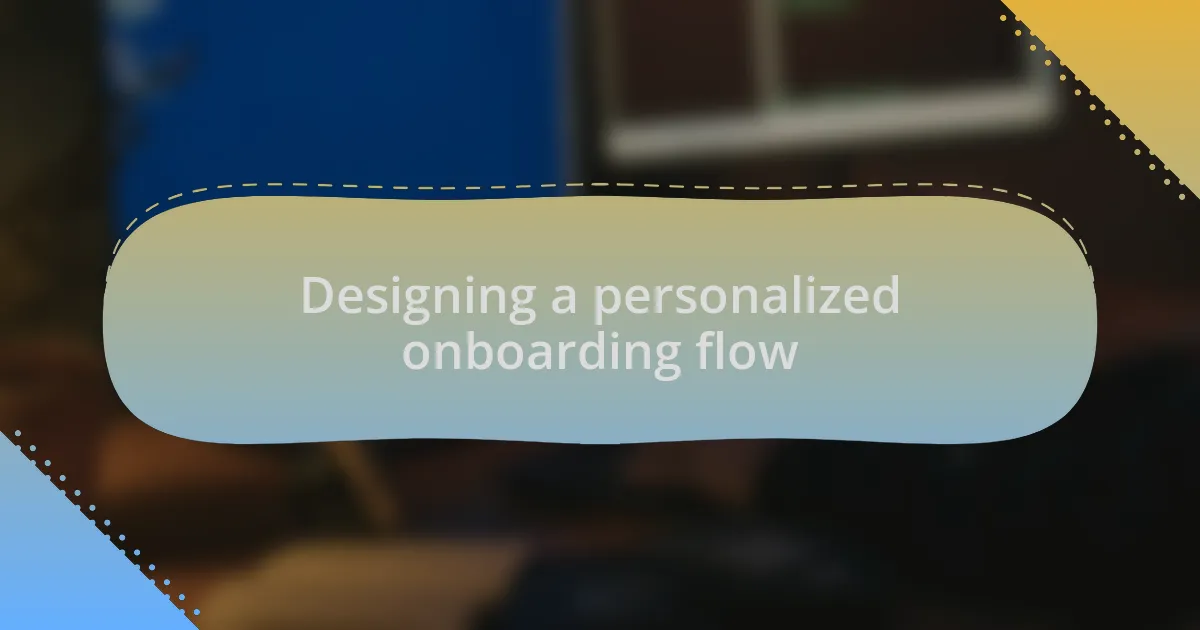
Designing a personalized onboarding flow
Creating a personalized onboarding flow is all about understanding the unique needs of each user. In my experience, implementing user surveys during the initial sign-up process can be incredibly effective. For instance, I once added a simple questionnaire to gauge users’ experience levels and goals, which allowed me to tailor the onboarding process specifically to their needs. Have you noticed how much more engaged users can be when they feel that the material is relevant to them?
I also recommend using adaptable pathways in your onboarding flow, which dynamically change based on user inputs. One time, I integrated a visual progress tracker that adjusted as users completed tasks aligned with their stated goals. This made the process more interactive and fun, keeping users motivated to continue. It’s genuinely rewarding to see users discard their initial doubts and commit to their learning journey.
Don’t underestimate the power of feedback loops either. After users complete their onboarding, I send out a quick survey to gather their thoughts. Reflecting on one such instance, I was surprised when many users expressed appreciation for the customization options. This feedback not only validated my approach but also inspired me to keep refining the onboarding experience. How do you incorporate user feedback into your design? Engaging directly with your users can provide unfiltered insights that are invaluable for continued improvement.
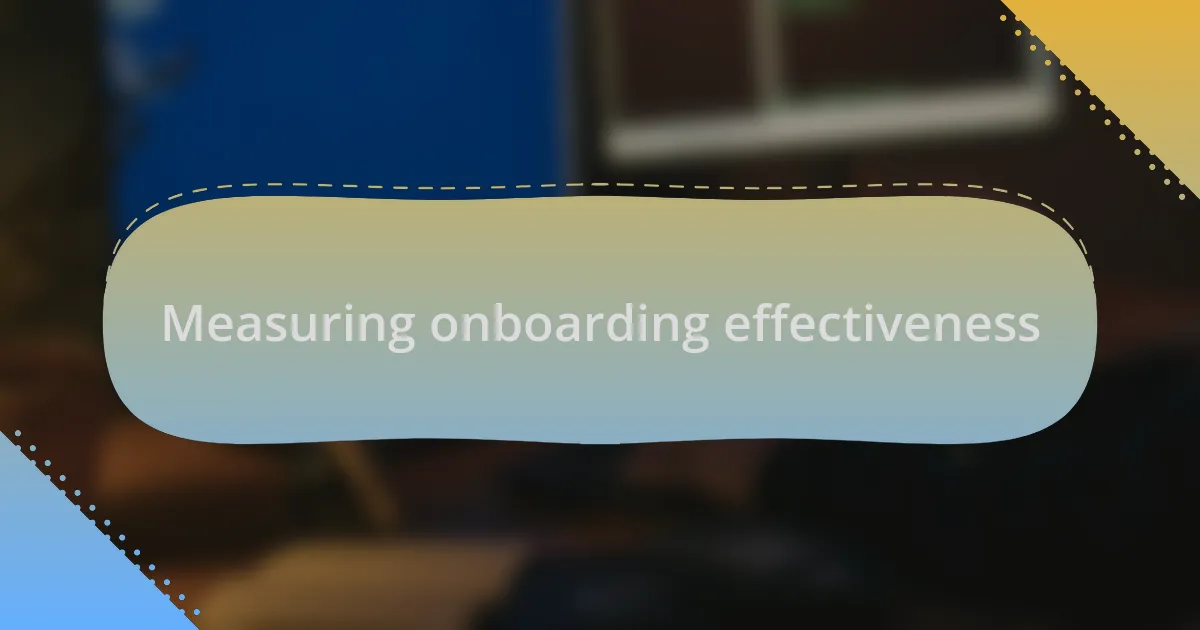
Measuring onboarding effectiveness
To gauge the effectiveness of onboarding, I find that key performance indicators (KPIs) are essential. One of the most telling metrics I’ve tracked is the user retention rate over the first month. In my experience, when I noticed a dip in retention just a week after onboarding, it made me rethink the flow entirely. Have you ever had that moment when you realize something isn’t clicking for your users?
Another useful method I’ve implemented is tracking user engagement through completion rates of onboarding tasks. I once analyzed user data and discovered that only 60% completed the initial tutorial, prompting me to make it shorter and more engaging. It’s fascinating to see how small changes can significantly improve completion rates – have you noticed how users respond differently to concise, focused content?
Lastly, direct user feedback during onboarding leaves a lasting impact. I once posed open-ended questions to a small group of users soon after they finished onboarding. The insights I received were eye-opening. One user shared that they found parts of the onboarding overwhelming while another appreciated the step-by-step guidance. How can we fine-tune our onboarding processes to turn these insights into actionable changes? Listening to these voices is crucial for creating experiences that truly resonate.
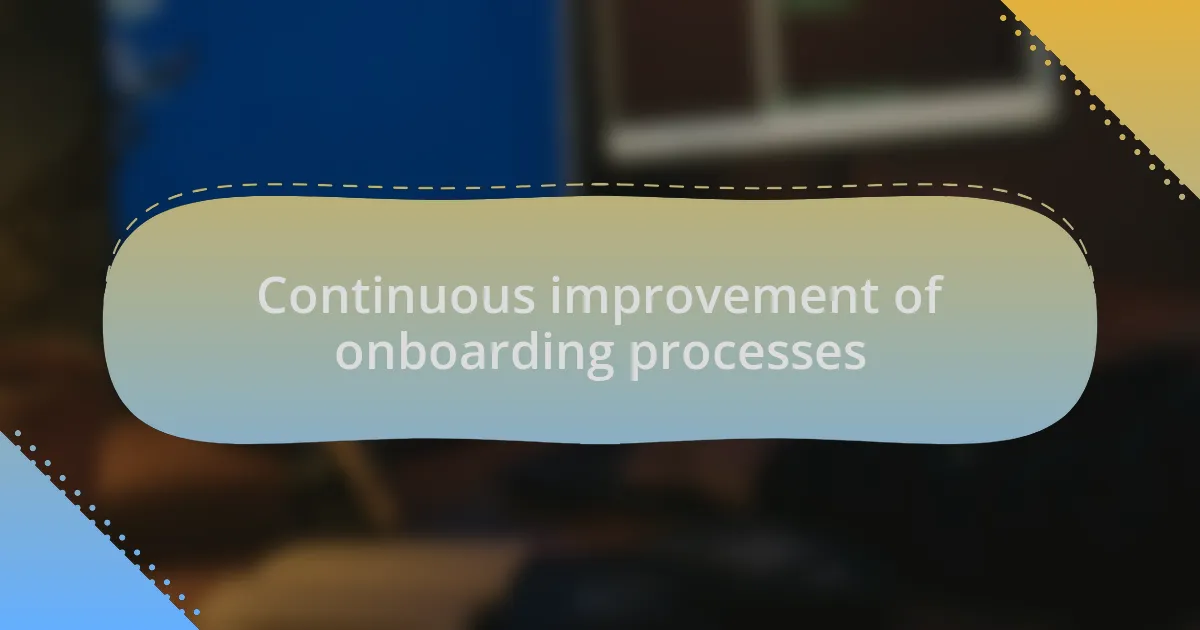
Continuous improvement of onboarding processes
After implementing initial changes to the onboarding process, I realized that continuous improvement is not just a one-time effort. I regularly scheduled feedback sessions with my team to reflect on user insights and to brainstorm new ideas for enhancement. One time, we stumbled upon an unexpected suggestion that radically changed our approach: simplifying the language used in our tutorials. Have you ever experienced a moment of clarity that completely reshapes your outlook?
The dynamic nature of user preferences means that what works today might not resonate tomorrow. I recall a specific instance when a minor detail in the onboarding tutorial was flagged by several new users. They felt that including interactive quizzes would spice things up and keep their attention. It was a game-changer. I implemented those quizzes, and the spike in engagement was immediate. How often do we underestimate users’ creative ideas that could lead to significant improvements?
Fostering a culture of experimentation has been invaluable in refining our onboarding experiences. I often encourage my team to test new approaches, even if they seem unconventional. For instance, introducing gamification elements initially felt risky, but it turned out to captivate our users and enhance their journey. Embracing change isn’t just about enhancing metrics; it’s about creating an environment where users genuinely feel valued and heard. How can we ensure that every iteration makes onboarding not just effective but enjoyable?